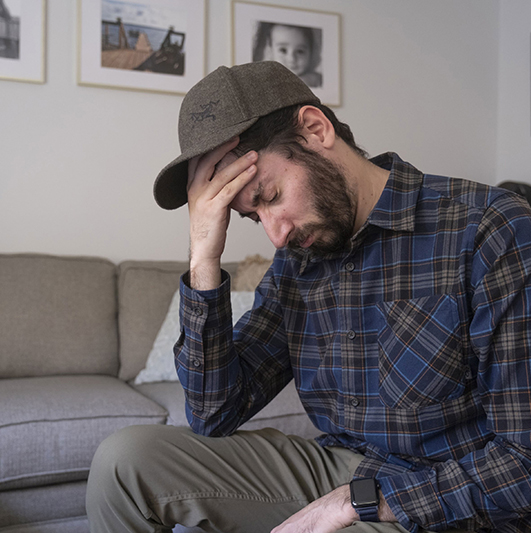Tips for Relief from a Headache Specialist

December 22, 2022
In today’s busy world, headaches have become increasingly common, often triggered by stress, lack of sleep, dehydration or a combination of all three.
While some headaches may be a mere annoyance, others can be debilitating or the sign of a more serious condition. Brian Gerhardstein, M.D., Ph.D., a neurologist and director of headache medicine at JFK University Medical Center, shares seven ways to help find relief from headaches.
1. Pain reliever medications
Standard over-the-counter pain or prescription pain medication can often be used to minimize headache pain.
“If you’re not finding relief from OTC pain relievers, your doctor can help find a treatment that works better for you. There are many different headache medications and treatment options available depending on the cause,” shares Dr. Gerhardstein.
2. Sitting in a dark room
“Headache pain can often be exacerbated by light, so find a comfortable, dark and quiet room to rest in. Sitting for 20 to 30 minutes can be beneficial,” Dr. Gerhardstein says.
3. Hot and cold compresses
Sometimes the intermittent use of hot and/or cold compresses on the head can help alleviate headaches. An ice pack covered by a washcloth can be applied, for no more than 10 minutes, to the forehead or cheeks; or alternatively a heat pack. This may help improve some types of headache pain.
4. Massage
Massages may seem like a luxurious choice, but they are often a therapeutic option for pain. Headaches can be triggered by muscle tension in the upper body or neck due to poor posture or a rigorous exercise routine. Massage therapy can help reduce muscle tension and aid with chronic pain.
“Ask your doctor if massage therapy is appropriate, and they can direct you to a practitioner that targets specific points of pain in the body, including in the head and neck,” advises Dr. Gerhardstein.
5. Acupuncture
Acupuncture has become increasingly popular for pain relief as well. This involves applying thin needles to naturally stimulate the body’s pain-relieving compounds.
6. Aromatherapy
Aromatherapy is a natural option that's easy to do at home. Certain scents, such as peppermint, eucalyptus, and lavender, have shown to trigger positive and even healing responses in the brain.
7. Breathing meditation
Another easy, non-medical solution that anyone can try is breathing exercises: slow rhythmic breaths can help relieve muscle tension.
Tips to Reduce Risk for Headache
Key tips to overall health and specifically for headache relief is getting enough sleep each night, eating regular healthy meals and drinking enough water.
The quality of sleep achieved is just as important as the quantity: this can be improved by removing stimulants before bedtime, such as screens, sugar, alcohol, and caffeine, and instead trying a relaxing activity before bedtime.
If you cannot get rid of your headache pain or if the pain is severe or associated with other symptoms or conditions,, a doctor should be consulted. This may be a sign of a more serious problem.
Next Steps & Resources:
- Meet our source: Brian Gerhardstein, M.D., Ph.D., Director of Headache Medicine at JFK Neuroscience Institute
- To make an appointment with Dr. Gerhardstein or a doctor near you, call 800-822-8905 or visit our website.
- Learn about headache and migraine treatments at Hackensack Meridian Health
The material provided through HealthU is intended to be used as general information only and should not replace the advice of your physician. Always consult your physician for individual care.






